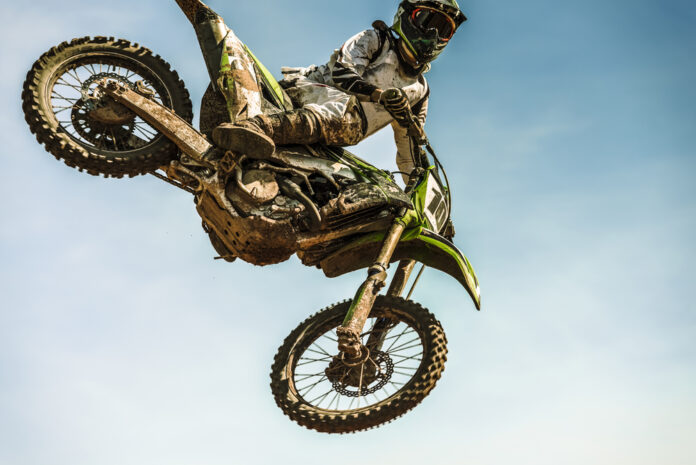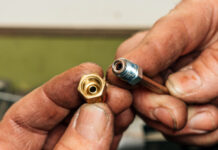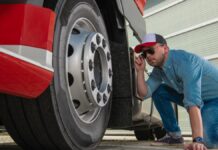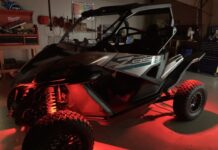Avid dirt bike riders almost always fall in love with their bikes. Many spend hours at a time on them, getting to know every minor quirk and imperfection. At first, they might not notice how all of that use is taking a toll on their bikes. Over time, though, those bikes start to look, sound, and feel old and may eventually fail to start.
When a dirt bike starts to age, its rider has two options. They can either throw in the towel and start looking at new bikes or commit to doing whatever it takes to get those old, beloved rides back to looking and feeling their best. This article is for riders who want to take the latter approach.
Dealing With Aesthetic Issues

Sometimes, dirt bikes start to feel old just because they look that way. If the bike is structurally and mechanically sound, its rider may be able to get it back into showroom-ready shape with relative ease.
Start by giving the bike a good cleaning and checking the condition of its plastic and decals. Too much wear and tear can leave scratches, fading, and other aesthetic issues, but applying new decals is an easy and affordable way to tackle them. Visit sengegraphics.com to view options and place an order for a high-quality graphics kit.
Improving Handling
Not all riders realize it, but many of the reasons they feel like their bikes aren’t handling as well as they used to are related not to the age of the bike but to the age and quality of its bearings. Worn, rusty bearings influence steering, control, and even power performance, so replacing them periodically is a must. The most important of them include:
- Wheel bearings
- Linkage bearings
- Swingarm bearings
- Steering head bearings
Changing the bearings can be a time-consuming process for riders attempting it for the first time, but it isn’t all that complicated. Good manufacturers sell ball bearings pre-sealed and ready for installation, so there’s no need for handling tiny parts or greasing each bearing individually. All it takes is removing the axle at the pinch bolts, then removing the seals with a flathead screwdriver.
The bearings themselves should be removed using a blind bearing puller set to avoid blowing gaskets. Simply remove the old ones, set the new bearings in place, and seat them gently using a socket. A spacer may also be necessary depending on the bearing set and should be installed at the same time.
Lubricating Moving Parts

Dirt bikes need to be lubricated regularly. This is particularly true of the chains and sprockets. The good news is that keeping parts lubricated is an easy, inexpensive form of maintenance that can help to avoid unnecessary repairs later down the road.
Riders who only hit the trails or tracks on an irregular basis should be particularly careful about keeping vital parts such as chains, sprockets, and bearings well-lubricated before heading out for each run.
Improving the Fuel System

Bikes with idling problems that feel like they hesitate or surge usually have issues with their carburetors. These essential parts of the fuel system are designed to stop the engine from running too rich or too lean, but like all parts, it will wear out eventually.
Using low-end, ethanol-based gas from local stations is a great way to shorten the lifespan of a dirt bike’s carburetor. The ethanol draws in moisture, which leaves parts to corrode. If riders leave their bikes sitting, the situation gets even worse as the fuel gels without a stabilizer and clogs the jets. At that point, the only effective solution is to rebuild or replace the carburetor.
If a 4-stroke bike is having problems starting in addition to rough idling and unusual surges or hesitation while running, it’s also worth checking the valves. Most riders don’t do this every day, and the valves can become too tight or too loose over time, which impacts the fuel system’s efficiency.
For 2-stroke bikes, fuel system issues can usually be traced back to the reeds. Unlike 4-stroke bikes, 2-stroke bikes don’t have carburetors and valves. Instead, the reeds control the fuel-air mixture, and they are prone to fraying over time. When the reeds start to fray it causes too much fuel or air to get into the engine, disrupting performance and making the bike feel older than its age.
Fixing Suspension Issues

A bike that starts up perfectly, runs great, and looks amazing won’t do its rider any good if the suspension is shot. Most riders will get roughly one lap in before feeling that it’s all their bodies can take.
In most cases, suspension issues can be traced back to fork oil, bushings, or seals. Forks that leak oil will wreak havoc on a bike’s suspension no matter how well the rest of it is cared for, so change them as soon as it becomes clear that there’s a leak.
Completing Top-End Rebuilds
A top-end rebuild is more challenging than most of the tasks required to recondition an old dirt bike, but it may be necessary if nothing else gets it back up and running like new. Completing a top-end rebuild involves replacing the pistons, rings, and gaskets, which are all essential parts of the engine.
Most experts recommend replacing these components every five years regardless of whether the bike gets ridden often or not. Riders without mechanical experience can’t afford to let this vital task slip by and should take their dirt bikes to a local shop to have the top end rebuilt according to schedule.
Saving an Old Bike Is Worth the Effort

The amount of effort it takes to get an old dirt bike back into like-new condition varies based on what’s wrong with it and how long it has been since it was properly serviced. In some cases, all it takes is a thorough cleaning and an oil change.
In others, the bike will need to be completely refurbished. Riders who are seriously in love with their bikes won’t hesitate to do whatever it takes to get them back into top shape and will find that it’s worth the effort.







